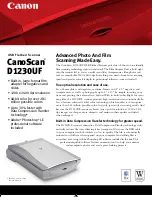
Pressure Systems, Inc. Model 9116 User’s Manual
Page 104
www.PressureSystems.com
Table 5.1
provides a convenient cross reference summary of the components found in your
Model 9116
Intelligent Pressure Scanner. This may be used as a guide to identify the
appropriate component replacement sections in this chapter.
Table 5.1
Component Cross Reference
Component
Section
PC-322 Main Board PCB Assembly
5.1.3.3
PC-323 PowerPC daughterboard PCB
Assembly
5.1.3.1
PC-327 Analog PCB Assembly
5.1.3.2
Internal Pneumatic Calibration
Manifold
5.1.6
Internal Solenoid Valves
5.1.5
Internal DH-200 Transducer
5.1.4
5.1.1
Common Maintenance
Your
Model 9116
Intelligent Pressure Scanner is designed for rugged use. No special
preventive maintenance is required, although periodic maintenance may be required to replace
worn or damaged components. Upgrades or modifications of module hardware or firmware
may also be periodically required. For users who wish to do their own maintenance and repairs,
maintenance kits and replacement parts for each model may be purchased from the factory.
All circuit boards are sensitive to electrostatic discharges. Anti-static protection is required
whenever the unit is open.
When performing any type of maintenance of Model 9116 components, the following guidelines
and precautions should always be followed:
●
Verify that the work area and technicians are properly grounded to prevent damage to
electronic components due to electrostatic discharge.
●
Ensure that all electrical and pneumatic connections have been removed from the module.
●
Ensure that the work area is free of dust and other possible contaminants that may affect
the high tolerance machined parts (and pneumatic seals, if model has an integral
manifold).
●
Care must be taken to prevent contaminants from reaching O-ring surfaces. If O-ring
surfaces require cleaning, use a lint-free applicator with acetone to remove dirt and lightly
lubricate the O-ring surface with Krytox® provided in the maintenance kit.
●
Never use sharp objects to cut tubing from the bulged tubes. The tiny scratches left on
the tubes could cause leaks.
















































